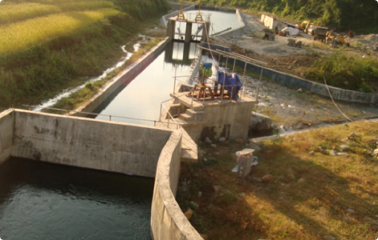Hydropower Projects

Khimti 1 Hydropower Project
Sahure,Hawa (Dolakha) Betali (Ramechhap)
- Commercial Operation Date : 2000-07-11
- Installed Capacity : 60MW
- Phase : Live
- Type : Run-of-River

Devighat Hydropower Station
Battar, Nuwakot
- Commercial Operation Date : 1984-12-01
- Installed Capacity : 14.1MW
- Phase : Live
- Type : Cascade of Trishuli Hydro Power Station

Sunkoshi Hydropower Station
Sindhupalchok
- Commercial Operation Date : 1972-04-13
- Installed Capacity : 10.05MW
- Phase : Live
- Type : Run-of River

Tinau Hydropower
Dovan, Palpa
- Commercial Operation Date : 1981-04-13
- Installed Capacity : 1.024MW
- Phase : Live
- Type : Run-of- River

Seti Hydropower Project
Nadipur, Pokhara
- Commercial Operation Date : 1985-11-01
- Installed Capacity : 1.5MW
- Phase : Live
- Type : Run-of-River

Marsyangdi Hydropower Station
Tanahu
- Commercial Operation Date : 1989-11-05
- Installed Capacity : 69MW
- Phase : Live
- Type : Peaking Run-of-River

Kulekhani 1 Hydropower Station
Dhorsing, Makwanpur
- Commercial Operation Date : 1982-05-04
- Installed Capacity : 60MW
- Phase : Live
- Type : Storage

Trishuli Hydropower Station
Trishuli, Nuwakot
- Commercial Operation Date : 1967-04-14
- Installed Capacity : 24MW
- Phase : Live
- Type : Peaking Run-of River

Gandak Hydropower Station
Surajpura, Nawalparasi
- Commercial Operation Date : 1979-04-01
- Installed Capacity : 15MW
- Phase : Live
- Type : Canal Drop

Panauti Hydropower Station
Panauti, Khopasi
- Commercial Operation Date : 1965-04-13
- Installed Capacity : 2.4MW
- Phase : Live
- Type : Run-of-River

Kulekhani II Hydropower Station
Bhainse, Makawanpur
- Commercial Operation Date : 1986-11-01
- Installed Capacity : 32MW
- Phase : Live
- Type : Cascade of Kulekhani I


